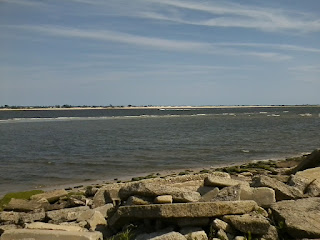About fifteen years ago, I saw someone riding a classic Cinelli track machine (fully chromed!) adorned with one of those flowery plastic baskets you see on little girls' bikes.
Had I seen it a few years earlier, I would have winced. Or, if the bike was parked and its owner wasn't anywhere in sight, I would have torn the basket off.
Instead, I smiled...knowingly. I had finally come to the realization that whatever keeps a person riding a bike is good. That day, I saw nothing in the basket and have no idea of whether that rider--who had maroon hair and high boots--ever carried anything in it. But if that basket made that bike more fun--let alone made it more useful--for her to ride, it couldn't have been bad.
I also realized that baskets, racks, fenders and other accessories--as well as wider saddles, higher handlebars and stems with longer quills and shorter extensions, might well keep the bike on the road or trail and not gathering dust in a garage--or, worse, rotting in a landfill.
What got to thinking about that chrome Cinelli track bike with the basket was this:
Karl King, a partner in an Arkansas blacksmith shop, built the bike near the end of the 19th Century. It might've been consigned to the local landfill, if not the dustbin of history, at the dawn of the automotive age had King not built that front basket on the front.
He wasn't using it to bring home pizzas or six-packs of his favorite craft brew, however. That basket had a seat belt in it, as its museum display sign notes. Take a closer look and you will see pegs--footrests--"just below the gooseneck" and in front of the mini-seat on the frame's top tube, as its museum display sign notes.
King's granddaughters, Kay Stark and Genevieve Jones, rode in those seats. Long after his death, they donated the bike to the Nevada County Depot and Museum, housed in an old railroad station in Prescott, 95 miles southwest of Little Rock. According to a museum posting, "the old two-wheeler looks as if it carried its last rider long ago and luckily found its way into the museum just before someone consigned it to that last great bicycle resting place, the scrap metal yard."
Hmm...Did the basket have anything to do with it?
Had I seen it a few years earlier, I would have winced. Or, if the bike was parked and its owner wasn't anywhere in sight, I would have torn the basket off.
Instead, I smiled...knowingly. I had finally come to the realization that whatever keeps a person riding a bike is good. That day, I saw nothing in the basket and have no idea of whether that rider--who had maroon hair and high boots--ever carried anything in it. But if that basket made that bike more fun--let alone made it more useful--for her to ride, it couldn't have been bad.
I also realized that baskets, racks, fenders and other accessories--as well as wider saddles, higher handlebars and stems with longer quills and shorter extensions, might well keep the bike on the road or trail and not gathering dust in a garage--or, worse, rotting in a landfill.
What got to thinking about that chrome Cinelli track bike with the basket was this:
Karl King, a partner in an Arkansas blacksmith shop, built the bike near the end of the 19th Century. It might've been consigned to the local landfill, if not the dustbin of history, at the dawn of the automotive age had King not built that front basket on the front.
He wasn't using it to bring home pizzas or six-packs of his favorite craft brew, however. That basket had a seat belt in it, as its museum display sign notes. Take a closer look and you will see pegs--footrests--"just below the gooseneck" and in front of the mini-seat on the frame's top tube, as its museum display sign notes.
King's granddaughters, Kay Stark and Genevieve Jones, rode in those seats. Long after his death, they donated the bike to the Nevada County Depot and Museum, housed in an old railroad station in Prescott, 95 miles southwest of Little Rock. According to a museum posting, "the old two-wheeler looks as if it carried its last rider long ago and luckily found its way into the museum just before someone consigned it to that last great bicycle resting place, the scrap metal yard."
Hmm...Did the basket have anything to do with it?




















